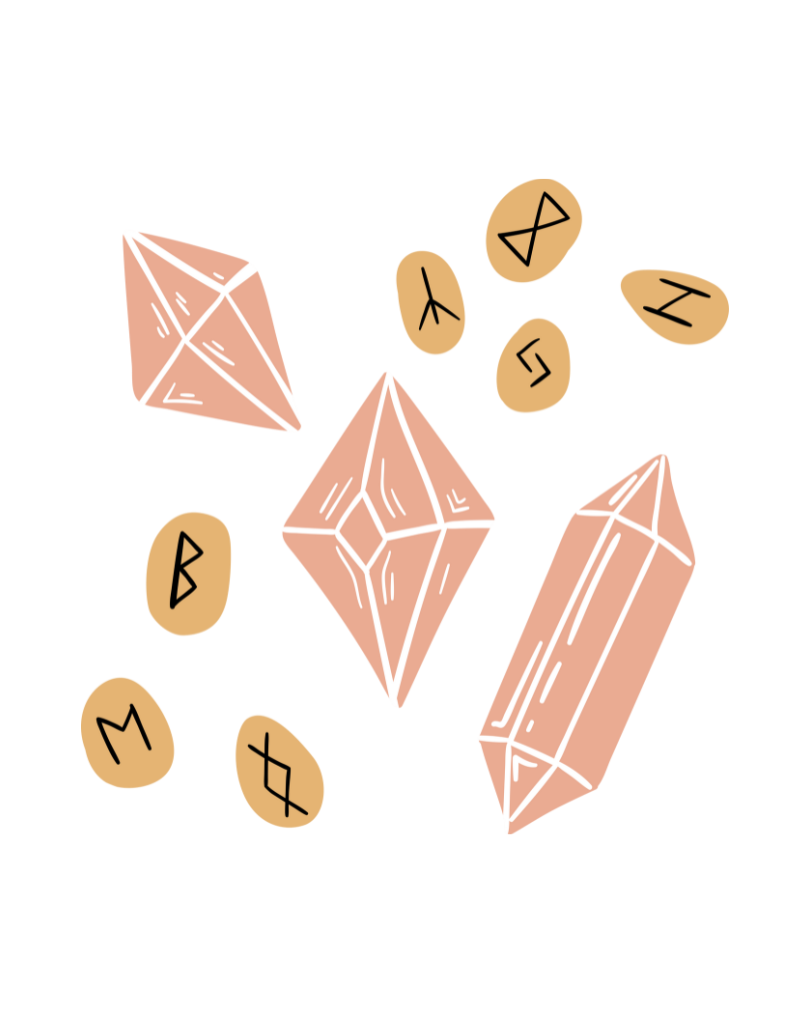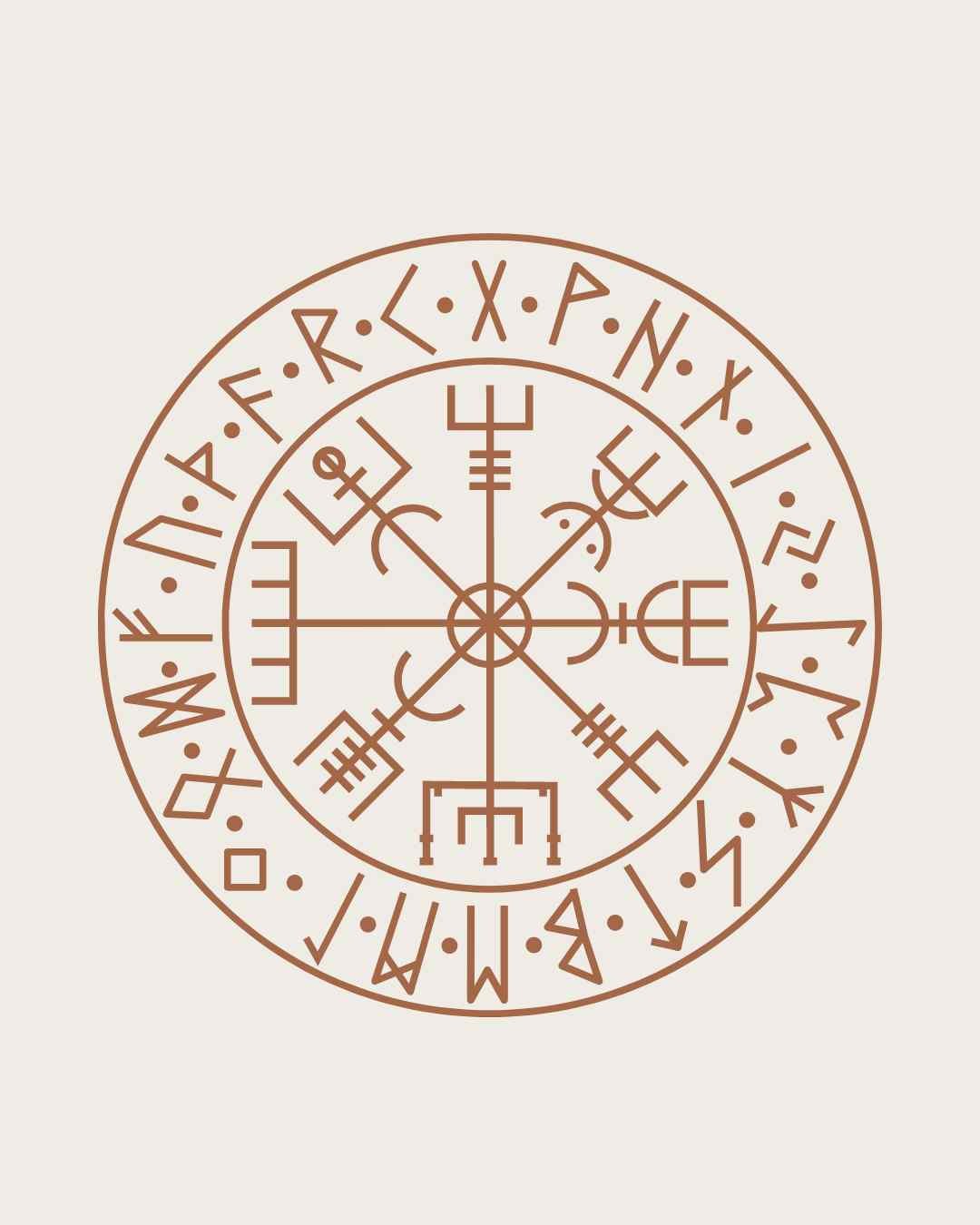Norse Rune Symbols And Their Meanings
Rune symbols are an essential part of Norse mythology and culture. Runes are an alphabet the Norse people use to write their language, and each rune has its own name, sound, and symbolic meaning. In Norse mythology, runes are believed to be powerful symbols that hold the keys to knowledge, wisdom, and spiritual power.
Rune Symbols and Meaning
Runes were used by the Norse people for a variety of purposes, including writing, divination, and magic. They were often carved into wood, bone, or stone, and were used as amulets and talismans to protect and empower the wearer. The word "rune" comes from the Old Norse word "rún," which means "secret" or "mystery."
In Norse mythology, runes are believed to be the symbols of the Norse gods and are thought to hold the keys to unlocking the mysteries of the universe. Rune stones are an essential tool for divination in Norse mythology and culture.
Divination uses symbols and signs to gain insight into the past, present, and future, and runes are believed to be powerful symbols that hold the keys to knowledge, wisdom, and spiritual power. Each rune symbol has a unique significance — read on to learn each rune meaning.
Freyr’s Aett
In Norse mythology, Freyr is a god associated with fertility, prosperity, and abundance. He is the son of the god Njörðr and is often depicted holding a branch or a hammer. Freyr is a member of the Vanir, a group of fertility gods, and is associated with the agricultural cycle and the growth of crops.
Freyr is associated with the first aett, or group, of runes in the Norse system of rune divination. It is composed of eight runes: Fehu, Uruz, Thurisaz, Ansuz, Raidho, Kenaz, Gebo, and Wunjo.
Fehu ᚠ: Wealth
The Fehu rune is associated with wealth and abundance. It can also represent the need to let go of something holding you back or the opportunity to start fresh.
Uruz ᚢ: Facing Challenges
The Uruz rune is associated with strength, vitality, and primal energy. It can also represent the need to face challenges or confront difficult situations.
Thurisaz ᚦ: Overcoming Obstacles
The Thurisaz Rune is associated with protection, defense, and conflict. It is often considered to be a powerful rune of protection against hostile forces, as well as a symbol of the destructive power of nature. It can also represent the need to defend oneself or to overcome obstacles.
Ansuz ᚫ: Communication
The Ansuz rune is associated with the god Odin and is often considered the rune of communication, wisdom, and knowledge. It can also represent breaking a problematic situation or resolving a problem.
Raidho ᚱ: Journey
The Raidho rune is associated with the concept of movement and travel, as well as the journey of life. It is often considered a symbol of guidance, direction, and change. It can also represent the need to make crucial decisions or to take action in a specific situation.
Kenaz ᚲ: New Perspectives & Fresh Ideas
The Kenaz rune is associated with light, knowledge, and creativity. It can also represent the need to bring something hidden into the light or to gain a new perspective on a situation.
Gebo ᚷ: Gifts
The Gebo rune is associated with gifts, generosity, and reciprocity. It can also represent the need to give or receive in a specific situation.
Wunjo ᚹ: Joy
The Wunjo rune is associated with joy, happiness, and contentment. It can also represent the need to experience joy or to celebrate a victory.
Heimdall’s Aett
In Norse mythology, Heimdall is a god associated with vigilance, protection, and insight. He is the guardian of the Bifröst, the rainbow bridge that connects the realm of the gods to the realm of humans, and is often depicted holding a horn or a sword. In addition, Heimdall is known for his keen senses and ability to see and hear everything that happens in the nine realms of Norse mythology.
In the Norse system of rune divination, Heimdall is associated with the second aett, or group, of runes. It is composed of eight runes: Hagalaz, Nauthiz, Isa, Jera, Eihwaz, Perthro, Algiz, and Sowilo.
Hagalaz ᚺ: Release & Renewal
The Hagalaz rune is associated with destruction, disruption, and chaos. It can also represent the need to let go of something or to experience a complex or challenging situation.
Nauthiz ᚾ: Needs
The Nauthiz rune is associated with the concept of need, constraint, and limitation. It can also represent the need to work hard or to overcome obstacles.
Isa ᛁ: Stillness & Solitude
The Isa rune is associated with ice, stillness, and inaction. It can also represent the need to slow down or take time for yourself.
Jera ᛃ: Abundance
The Jera rune is associated with harvest, abundance, and reward. It can also represent the need to reap the rewards of your hard work or to enjoy the fruits of your labor.
Eihwaz ᛇ: Stability & Strength
The Eihwaz rune is associated with the concept of the World Tree, Yggdrasil, and the cosmic axis that connects the nine realms of Norse mythology. It is often considered a symbol of stability, strength, and protection. It can also represent the need to find grounding or to connect with your roots.
Perthro ᛈ: Destiny & Intuition
The Perthro rune is associated with secrets, mysteries, and the unknown. It can also represent the need to seek answers or explore the unknown.
Algiz ᛉ: Guidance From Higher Powers
The Algiz rune is associated with protection, defense, and the god Heimdall. It is often considered a symbol of guidance, support, and spiritual connection. It can also represent the need to seek advice or to feel protected.
Sowilo ᛋ: Light & Positivity
The Sowilo rune is associated with the sun, light, and vitality. It can also represent the need to find guidance or to feel inspired.
Tyr’s Aett
In Norse mythology, Tyr is a god associated with war, justice, and honor. He is the son of the god Odin and is often depicted holding a spear or a sword. Tyr is a member of the Æsir, a group of warrior gods, and is associated with justice and maintaining order.
Tyr is associated with the third aett, or group, of runes in the Norse system of rune divination. It is composed of eight runes: Tiwaz, Berkano, Ehwaz, Mannaz, Laguz, Ingwaz, Othala, and Dagaz.
Tiwaz ᛏ: Justice
The Tiwaz rune is associated with the god Tyr, the god of war, and is often considered a potent rune of justice, honor, and sacrifice. It can also represent the need to stand up for your beliefs or to defend yourself.
Berkana ᛒ: Growth
The Berkana Rune is associated with growth, fertility, and new beginnings. It can also represent the need to support others or to find nourishment for yourself.
Ehwaz ᛖ: Trust & Loyalty
The Ehwaz rune is associated with trust, loyalty, and partnership. It can also represent the need to find support or work together.
Mannaz ᛗ: Self-Awareness
The Mannaz rune is associated with the concept of the self, the human being, and the human community. It is a symbol of self-awareness, self-acceptance, and self-improvement. It can also represent the need to understand yourself or to find your place in the world.
Laguz ᛚ: Creativity
The Laguz rune is associated with water, the ocean, and the subconscious mind. It can also represent the need to tap into your subconscious or explore your emotional depths.
Ingwaz ᛝ: Fertility
The Ingwaz rune is associated with the concept of the god Ing, the god of peace and fertility. It can also represent the need to complete something or find success in your endeavors.
Othala ᛟ: Family & Heritage
The Othala rune is associated with inheritance, property, and the ancestral home. It can also represent the need to connect with your roots or to claim your inheritance.
Dagaz ᛞ: Transformation
The Dagaz Rune is associated with day, light, and clarity. It can also represent the need to find clarity or to see the bigger picture.
How To Cast Runes And Do A Rune Reading
To cast runes and do a rune reading, you will need a set of runes and a quiet, comfortable space to work in. You can purchase a set of runes or make your own by finding small objects or stones to carve the symbols onto.
To begin a reading, hold the runes in your dominant hand and focus on a specific question or issue that you want guidance on. Then, take a few deep breaths to clear your mind and relax. When ready, throw the runes onto a flat surface, such as a table or cloth.
Look at the runes that have landed face up and try to interpret their meanings based on the symbols and their positions with each other. Each rune has a specific meaning, and the combination of runes in your reading can provide insight and guidance on your question or issue.




